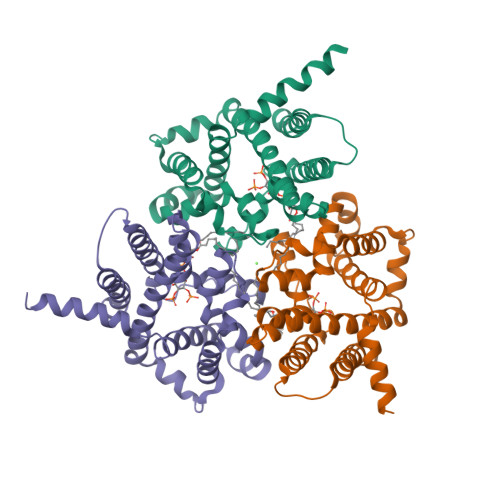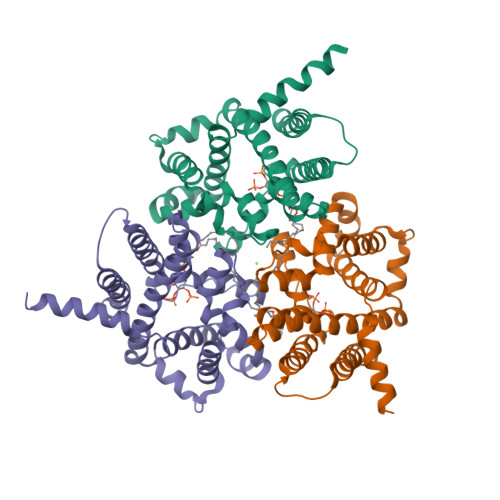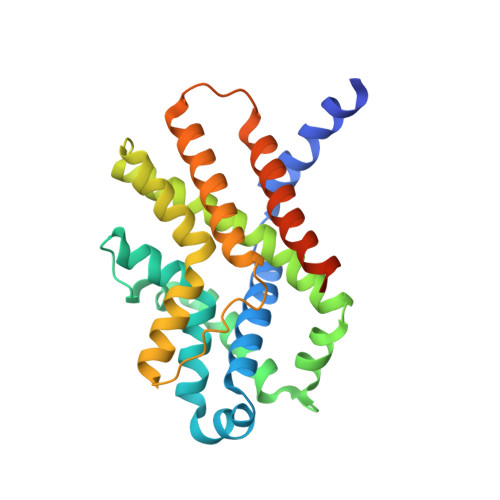Pore architecture of TRIC channels and insights into their gating mechanism.
Yang, H.T., Hu, M.H., Guo, J.L., Ou, X.M., Cai, T.X., Liu, Z.F.(2016) Nature 538: 537-541
- PubMed: 27698420
- DOI: https://doi.org/10.1038/nature19767
- Primary Citation of Related Structures:
5EGI, 5EIK - PubMed Abstract:
Intracellular Ca 2+ signalling processes are fundamental to muscle contraction, neurotransmitter release, cell growth and apoptosis. Release of Ca 2+ from the intracellular stores is supported by a series of ion channels in sarcoplasmic or endoplasmic reticulum (SR/ER). Among them, two isoforms of the trimeric intracellular cation (TRIC) channel family, named TRIC-A and TRIC-B, modulate the release of Ca 2+ through the ryanodine receptor or inositol triphosphate receptor, and maintain the homeostasis of ions within SR/ER lumen. Genetic ablations or mutations of TRIC channels are associated with hypertension, heart disease, respiratory defects and brittle bone disease. Despite the pivotal function of TRIC channels in Ca 2+ signalling, their pore architectures and gating mechanisms remain unknown. Here we present the structures of TRIC-B1 and TRIC-B2 channels from Caenorhabditis elegans in complex with endogenous phosphatidylinositol-4,5-biphosphate (PtdIns(4,5)P 2 , also known as PIP 2 ) lipid molecules. The TRIC-B1/B2 proteins and PIP 2 assemble into a symmetrical homotrimeric complex. Each monomer contains an hourglass-shaped hydrophilic pore contained within a seven-transmembrane-helix domain. Structural and functional analyses unravel the central role of PIP 2 in stabilizing the cytoplasmic gate of the ion permeation pathway and reveal a marked Ca 2+ -induced conformational change in a cytoplasmic loop above the gate. A mechanistic model has been proposed to account for the complex gating mechanism of TRIC channels.
Organizational Affiliation:
National Laboratory of Biomacromolecules, CAS Center for Excellence in Biomacromolecules, Institute of Biophysics, Chinese Academy of Sciences, Beijing 100101, China.



















